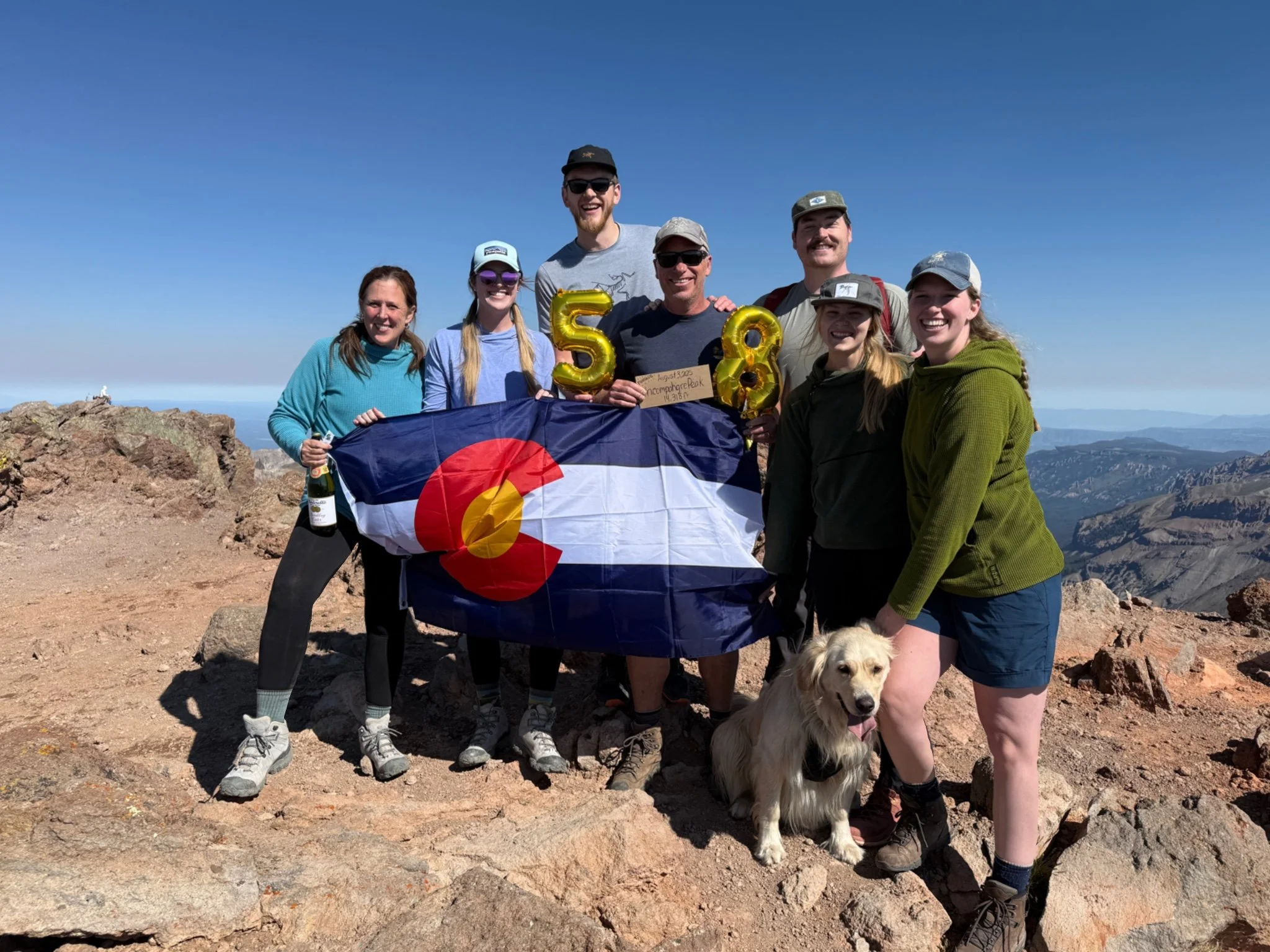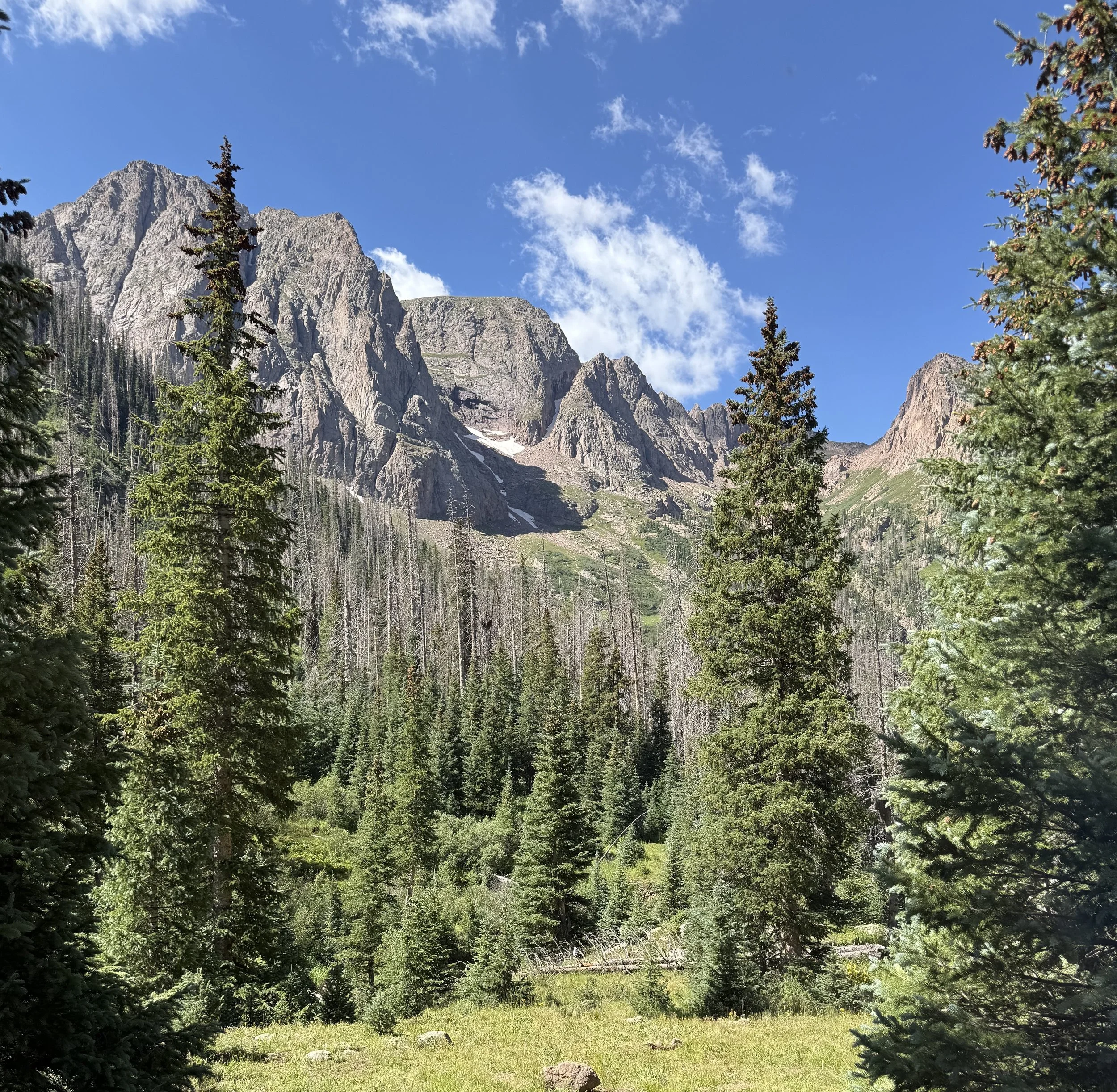After 14 years of steady pursuit, the moment finally arrived—standing atop Colorado's Uncompahgre 14,318’ peak, overwhelmed by what can only be described as pure euphoria. Euphoric—a feeling of intense excitement and happiness—captures part of it. Still, my interpretation runs deeper: a sense of being "full-hearted," where gratitude, accomplishment, and profound connection converge into something that transcends mere joy. The completion of all 58 of Colorado's fourteeners wasn't just a personal milestone; it was a testament to answered prayers, perseverance, family bond, lifetime friendships, and the awe and beauty of the mountains.
After completing six summits this summer, my last five peaks were before me, starting with a train ride into Chicago Basin from Durango. The trek wasn't a spontaneous adventure—the train tickets were purchased back in February, a leap of faith that everything would align: weather, health, and timing. The final push unfolded as a carefully orchestrated two-part excursion. First came four extraordinary days in the backcountry, riding the historic 140-year-old Durango to Silverton steam train into the wilderness, then summiting four peaks while experiencing every form of weather imaginable—from bone-chilling 30-degree mornings after a nighttime hail storm to a pleasant 65-degree sunny afternoons. The 3 day backcountry venture was followed by driving around to Lake City to meet family and friends for one final, gentler summit that would include our Golden retriever, Winston.
The most magical moment came on the third of four peaks, when threatening weather surrounded us on all sides. Within a 30-mile radius, every visible mountaintop was being hammered by rain, thunder, and lightning—except for our summit, Mt Eolus. We stood in brilliant sunshine with the sun warming our shoulders, feeling divinely protected while nature's fury raged around us. It was a moment that demanded gratitude and left us saying, "Thank you, Lord."
The fourth peak brought its threat as "dipping dots"—that unique high-altitude hail that resembles candy store treats—pelted us during our final ascent. After an exhausting 11.5-hour hiking day, my 27-year-old hiking companion, whom I'd been mentoring for a year, had the inspired idea of a cold plunge in the ice-cold mountain river. It had rained on us the entire descent, but remarkably, the sun broke through just 20 minutes before we reached camp. We both dropped into that frigid water for five minutes, then sat warming ourselves on the sun-heated rocks—a complete total refresh.
The train journey itself added nostalgic layers to the adventure, skirting 500-foot cliffs and hugging the water's edge along the same route I'd traveled with my brother 32 years earlier. Those memory-filled moments on the rails deepened the emotional significance of an already profound expedition.
Standing on that final peak, I was surrounded by the people who matter most: my wife Cari, my 25-year-old daughter Bethany—a living miracle after spending three days in a hospital bed just months earlier battling lupus—my oldest daughter Ellie, my son-in-law, and a dear young couple, with him celebrating his first 14er summit. Watching my daughter conquer that mountain after her phenomenal recovery over six to seven months brought tears of joy during our tender Sunday ascent. Remembering hiking with my oldest daughter, Ellie, on Mt. Elbert in 2011 brought more joyful tears. Looking across the endless sea of Colorado's high country, I was overwhelmed with gratitude, joy, satisfaction, and praise to God for His grace along the way. This pursuit, which began 14 years ago when my children were younger, had become a thread woven through the fabric of our family's story—marking milestones, creating memories, and now celebrating the summit finish together.
The joy of the summit comes whether it's your first or your 58th.
What's your summit?
Your pursuit of a goal may not always feel euphoric. Yet, in the pursuit of your peak, you can enjoy the journey, the conversations with your companions, the gratitude for the ability to pursue your next peak, and the faith-filled moments that nourish your soul along the way.
Happy sojourning to your summit!







